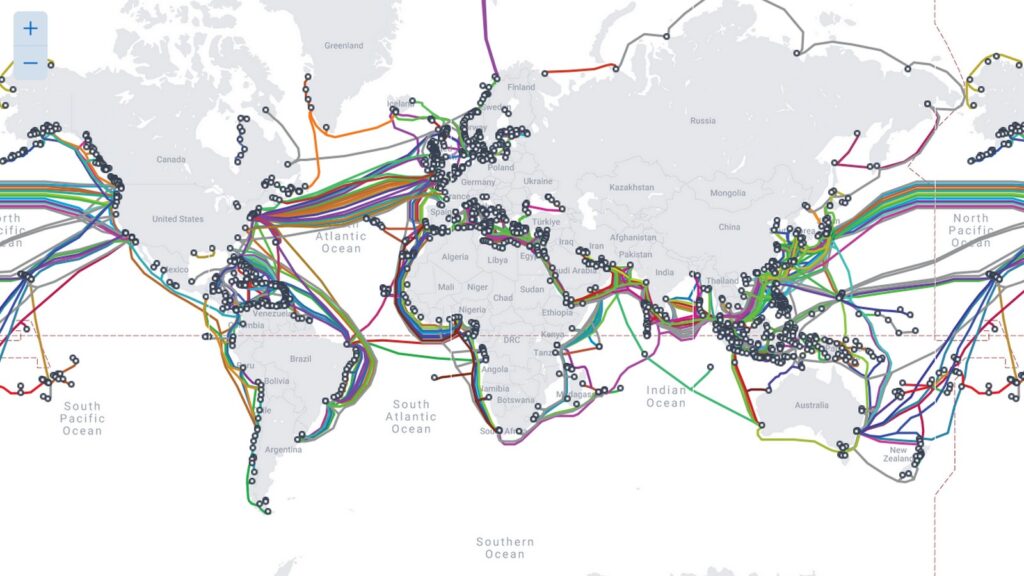
The West African Cable System (WACS) and the South Atlantic 3 (SAT–3) submarine cables were damaged between the Democratic Republic of Congo and Cameroon, resulting in slow internet speeds in Southern Africa; affecting countries like Gabon, the Republic of the Congo, the Democratic Republic of the Congo (DRC), Angola, Namibia and South Africa.
It is speculated that rock falls in the undersea Congo Canyon may have caused damages to the two cables, but the cause and extend of damages will only be determined when cable-laying ship Léon Thévenin, registered in Mauritius and owned by France Telecom, arrives in the area to repair the cables. The Léon Thévenin has been mobilised for deep-water repairs of the two cables.
The Léon Thévenin’s location can be viewed on the Marine Traffic map. From the ship’s location, it is clear that a quick repair of the damaged cables is unlikely.
The location of a break in a fibre optic cable is determined by measuring the distance from a cable endpoint, using a Coherent Optical Time Domain Reflectometer. The equipment measures the time a light pulse travels down a cable and when it is received back, thereby calculating the distance the light pulse travelled; much like radar signals determine the distance of an object.
According to network status reports, SAT–3 was cut on Sunday morning, while WACS went down later that evening.
Telkom’s fixed-line division, Openserve, has confirmed the breaks and said it was working with its consortium partners to facilitate the restoration of the cables. Fortunately, Openserve invested in other international cables, resulting in alternative routes to connect to other countries. However, re-routed internet traffic will result in higher demand on available internet infrastructure and potentially longer distances via the alternative routes.
Openserve said that no official restoration timeline had been communicated by the consortium yet.






